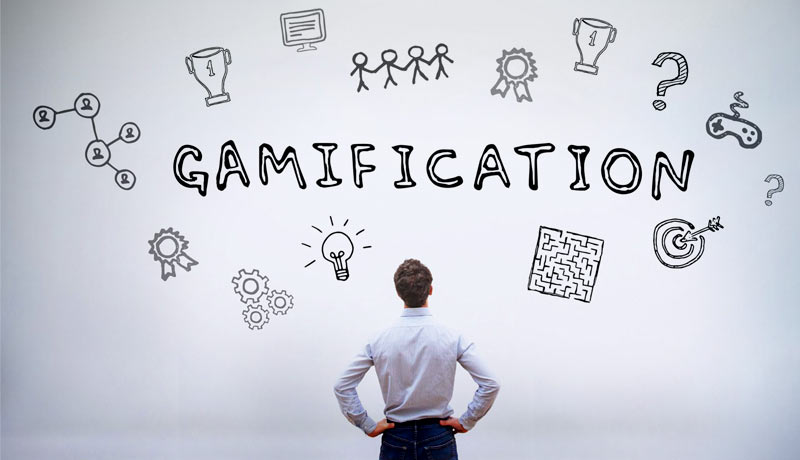
Gamification has played a major role in transforming the learning process as one of the highly entertaining techniques in the context of e-learning boom during the worldwide pandemic.
In the year 2020, Gamification will step towards a new phase of approachability, functionality and science integration learning. This more vibrant and refined approach of bringing the game into the educational process will be a lot more subtle than earlier gamification attempts. The more effective and engaging a gamification process is, the less it is noticed by the learner.
The learning game designers need to make sure that they consciously in-build the intrinsic motivational factors their user needs, for which they need to examine the type of learner in depth. For example, extrinsic rewards like resource points gains or gift claiming are good enough. The same is true for gamification for learning as well, learners will initially get hooked to learning due to external factors like badges, leaderboards, etc but will come back wanting more of it only when they enjoy the process of learning. Hence, many learning architects believe that the future of gamification will see an inevitable shift to more inherent motivation factors which will make them unaware that they have been taken to more inner engagement of learning.
Learning content based on games will make deeper inroads into key sectors such as education, healthcare, pharmaceuticals, financial services and so on. Yet gamification must find its application in other areas of learning as well like induction, sales training, onboarding, soft skills development of new employees etc. Employee onboarding is no longer an overseen aspect, as studies show that, if you provide them with a well-trained onboarding procedure, new hires are 69 percent more likely to stay around for more than 3 years.
E-learning gamification will find a wider and very common application in the unexplored areas of corporate governance, civic maintenance. You can also provide your staff with an engaging onboarding experience as it could be a better way to educate and engage your inductees rather than through a clearly defined gamified solution. Gamifying the onboarding process was a hot trend during 2019 with many organizations opting to step away from traditional processes where new recruits are expected to steadily wade through obligatory information files.
Human resource productivity and smart project management tools have seen the biggest increase in gamification in recent days and obviously there is much more to come. The HR Tech market is exploring gamification of employee engagement with a lot more effort even in the recruitment space, where gamification is eliminating bias and provides the opportunity for 24/7 feedback. This exploration would certainly add more innovation to the gamification industry in the years ahead.
A gamified onboarding platform is a great way for an employee to bond quickly with the organization and it’s an interesting opportunity for potential hires to get to know the business and learn how to do better with their work. The content is delivered in bite-sized chunks during different onboarding stages. Team games can also be utilized to facilitate interaction and establish connections among various teams of employees.

In fact, in human resource management employee onboarding is currently, the strongest area of business gamification, as it provides a better value to the organization creating a brand experience for the employer and increasing retention and application of the new hires. Through employee engagement program if the company creates a reward structure, recognizes progress and achievement and encourages new hires to level up and implement perimeter building game mechanics, it makes sure a greater number of strong and loyal hires as an outcome of this brilliant onboarding process.
In a corporate or academic learning environment most of the existing LMSs have the strongest gamified elements like points, extra mile benefits, badges, and leaderboards in order to create and sustain user engagement and detailed tracking of the user’s learning process and progress, which can then be assessed, rewarded and cultivated as per the interests of the organization.
While e-learning gamification is also used as a standalone learning strategy, there is a visible trend of combining or blending e-learning gamification with other learning strategies. For example, according to a recent study conducted on a group of target learners, it was discovered that micro-learning creates 50% more engagement. When micro-learning is combined with e-learning gamification, the benefits of learner engagement is expected to multiply several times.
In academic segment E-learning, gamification can blend with other technologies and as well, such as AR, VR Mixed Reality to make the learning more immersive. In the corporate sector also these new technology elements are coming seriously. For example Imagine playing an online firefighting gamified VR module where you can learn the regulations, processes, the basics of firefighting, the ‘do’s and don’ts’ etc in a virtual environment console build.
The gamification as an industry is still only at the beginning stage. The key factor for this is that it needs massive investment in producing content but it can be overcome by discovering strategies for generating low-cost content. When the online and digital learning field would become more popular, gamification may play a great role in retaining the learner and imparting any knowledge more deeply as per the learning taxonomy to achieve mastery of the concepts of any given idea.